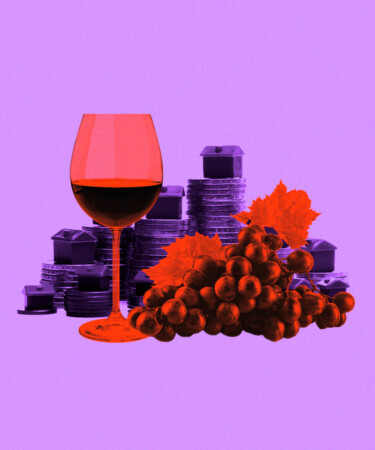In an effort to further decode the world’s most complicated wine labels, we’re unpacking a term most often seen on French bottles. Monopole, which translates to monopoly, is a French term used to describe when an entire vineyard is owned by a single grower or company. While the term itself is quite simple and is similar to our understanding of what a monopoly is in business, there are still some questions left to be answered: What regions use this designation? And is a wine from a monopole vineyard better quality? VinePair asked wine educator, Cabernet Franc enthusiast, and creator of Cab Franc Chronicles Allison Slute to shed some light on the topic.
As to why wineries would choose to add this word to their bottles, Slute says there’s actually no labeling requirement to share whether or not the wine is from a monopole. Still, many producers choose to opt in if the vineyard has a historical significance or is highly regarded from a viticultural perspective.
“Perhaps the vineyard was once owned by royalty or a noble family, or was the site of an important battle or stop on a religious pilgrimage,” Slute says. “While a monopole vineyard is not a guarantee of quality, it can give an indication of prestige to a certain extent.” So, if a vineyard is a monopole, that doesn’t necessarily mean it’s known for producing outstanding grapes — like, say, a grand cru vineyard.) But if a winery includes the term on the label, it’s usually some sort of flex. That’s one reason it can often be seen on labels from France’s Burgundy region, which is home to many well-esteemed vineyards.
“Two of the region’s most famous monopoles are La Romanée-Conti and La Tâche, both owned by Domaine de la Romanée Conti,” Slute says. (This makes sense, as this estate produces some of the most expensive wines in the world.) Although the term was typically reserved for showing off ownership of the best vineyards in Burgundy, “we are now starting to see the term used in other regions of France, such as the Loire Valley, the Rhône, Alsace, and Champagne,” Slute adds. “Outside of France, the term monopole has started being used most notably in Piedmont, particularly in regions like Barolo.” As a Cabernet Franc aficionado, Slute is particularly attuned to the monopoles in the Loire Valley’s Chinon region.
Slute frequently educates her website’s readers about wines from notable monopole sites. That said, she says that while a monopole designation does have a degree of caché, it’s not the be all and end all when it comes to picking a wine.
“Part of the fun of my work with Cabernet Franc is examining important vineyards that have multiple owners to see if there is a particular ‘expression’ or signature of the grape from a given lieu-dit,” she says. “Some examples in the Loire Valley include Les Picasses and La Croix Boissée in Chinon, Grand-Mont in Bourgueil, and Les Poyeux in Saumur-Champigny.”
So, if you’re interested in exploring wines from vineyards that have some interesting historic ties to a certain winery, monopole wines are a great place to start. Just know that doesn’t always guarantee quality.
*Image retrieved from Jairo Rene Leiva – stock.adobe.com
